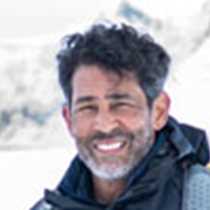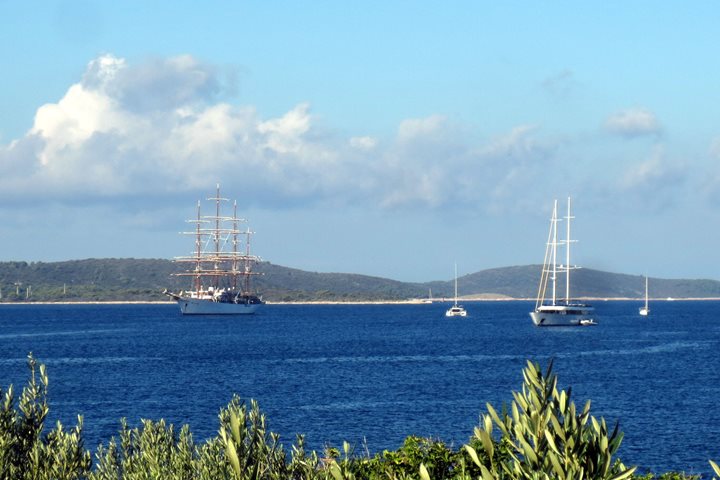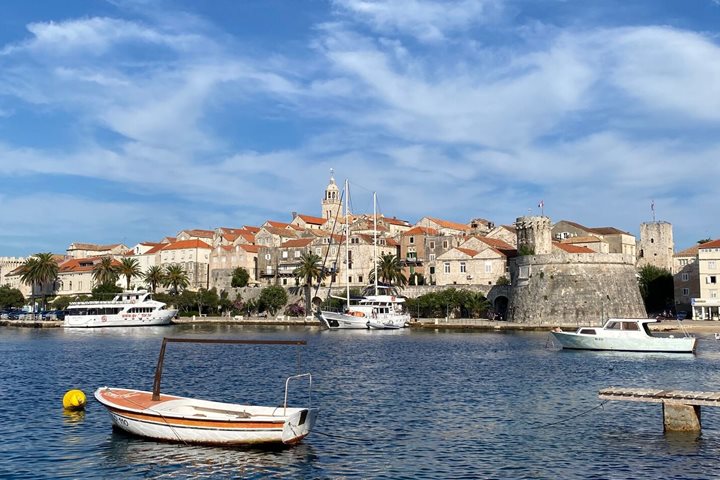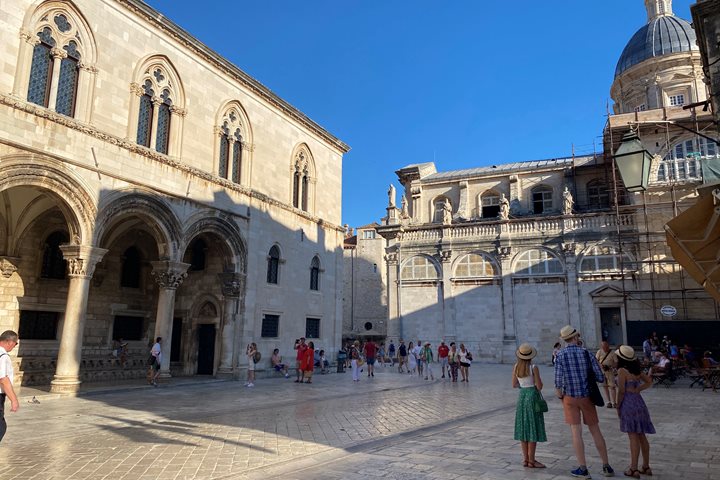We sailed from nearby Olympia in picture postcard weather. Ithaca rose up before us covered in the lush green foliage for which it is known. The Ionian Isles of which Ithaca is one are covered with rosemary, green shrubs of every variety, pale gray-green olive trees, and on the high elevations goats browse undisturbed. We dropped anchor at Vhati, famous for its protected, deep-water harbor. Ithaca cannot handle large cruise ships and when we landed at 8:45 we were greeted only by the statue of its most famous citizen, Odysseus, the hero of Homer’s Odyssey.
Our first excursion this morning was a breathtaking and stunning drive up a 900-meter mountain. The road was really a series of switchbacks with 90 degree turns every few hundred yards. Ithaca is sparsely populated and happily well off the mass tourist trail. Once we reached the top of the mountain, we walked out to an overlook and saw the entire island spread out below us. We could see Sea Cloud sitting majestically in the harbor. Slightly to our north, across a narrow channel, was the larger Greek island of Cephalonia. We next visited the monastic church where our guide Rula gave a very informative introduction to the Greek Orthodox church and its differences with the Roman Catholic church with which it was in communion until the Schism of 1054.
We then got back on our bus and visited an Orthodox church built during the Venetian period, which was covered with the most fabulous array of frescoes. Of particular interest was the massive painting on the frieze of the balcony of the separation of the damned souls from the saved. The gaping dragon’s mouth swallowing the poor damned was enough even to frighten a 21st century visitor. Imagine the impact it had on an illiterate peasant community. These images were not meant as mere decorations—the old Latin proverb was clear “Pictura docuit mea / the pictures teach me.” The peasant did not need to read to get the full force of the message.
Our next stop was to the beautiful hamlet of Stavros. This is a traditional small hill town hamlet, which was built high up to save the inhabitants from marauding pirates and the Ottomans. There we viewed a model of what a Mycenaean villa, like that owned by Odysseus, might have looked like. The real highlight of the day in Stavros was sampling the wonderful freddo cappuccino drunk with the luscious honey cake called Rovania.
After dinner our wonderful crew performed traditional sea shanties. They were a big hit and we all applauded vigorously.









